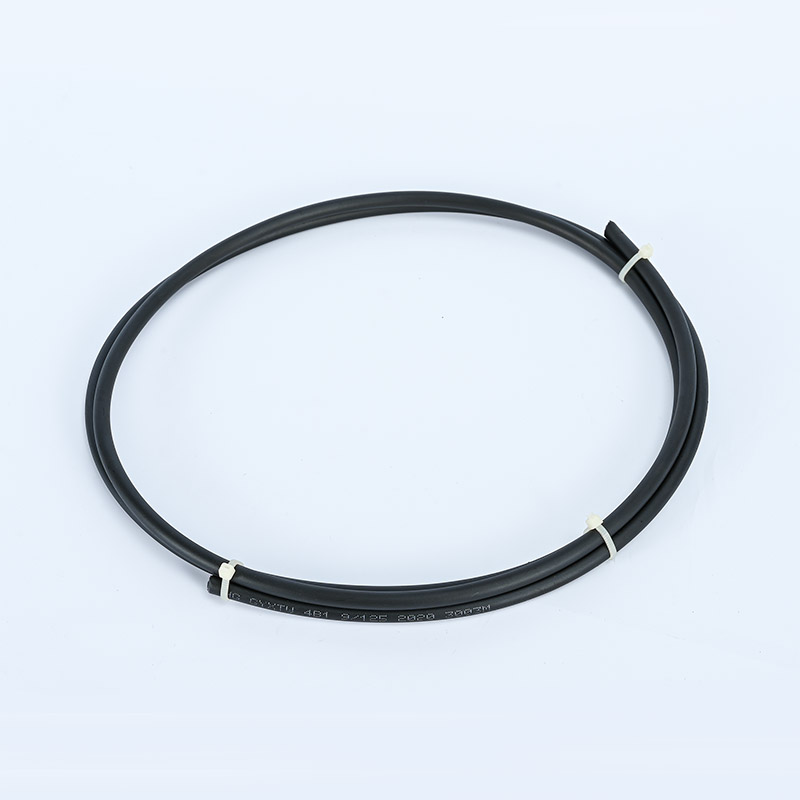Structural Characteristics of Coaxial Cable
Structural characteristics of coaxial cable
A coaxial cable consists of an inner conductor surrounding an insulating layer, a metal shielding mesh outside the insulating layer, and an outermost sheath. The metal shielding net of this structure can prevent the electromagnetic field from radiating outward from the central conductor, and can also be used to prevent the external electromagnetic field from interfering with the signal of the central conductor.
The first generation of coaxial cable: coaxial cable with solid core polyethylene material as insulating medium
Features: simple process, large attenuation.
The second generation of coaxial cable: coaxial cable with chemically foamed polyethylene material as insulating medium
Features: The degree of foaming is less than 50%, and there are chemical foaming agent residues, which affect the dielectric properties.
The third generation of coaxial cable: coaxial cable with lotus core longitudinal hole polyethylene material as insulating medium
Features: The attenuation is lower than the previous two generations, but the lotus body is easy to seep water, and its service life is stipulated to be five years.
Fourth generation coaxial cable: coaxial cable with physical foamed polyethylene material as insulating medium
Features: Foaming degree is up to 80%, attenuation is very small, micropores are closed, performance is stable, and service life is long.
Coaxial cable principle
Coaxial cables can be divided into two categories: 50Ω baseband coaxial cables and 75Ω broadband coaxial cables (ie network coaxial cables and video coaxial cables). Baseband cables are further divided into thin coaxial cables and thick coaxial cables. Baseband cables are only used for digital transmission, with data rates up to 10Mbps. Coaxial cable refers to a cable with two concentric conductors, and the conductor and the shield share the same axis. The most common coaxial cable consists of a copper wire conductor separated by an insulating material, on the outside of the inner layer of insulating material is another layer of ring conductor and its insulator, and then the entire cable is wrapped by a sheath of PVC or Teflon material .
The coaxial cable is divided into four layers from the inside out: the central copper wire, the plastic insulator, the mesh conductive layer and the wire sheath. The central copper wire and the mesh-like conductive layer form a current loop. It is named because the central copper wire and the mesh conductive layer are in a coaxial relationship.
Coaxial cables conduct alternating current rather than direct current, which means that the direction of the current is reversed several times per second. If a normal wire is used to transmit high-frequency currents, the wire acts as an antenna that emits radio outward, an effect that dissipates the power of the signal and reduces the strength of the received signal.
Coaxial cables are designed to solve this problem. The radio emitted by the center wire is isolated by the mesh conductive layer, which can control the emitted radio by grounding.
There is also a problem with coaxial cables, that is, if a certain section of the cable is squeezed or twisted, the distance between the center wire and the mesh conductive layer is not consistent, which will cause the internal radio waves to be blocked. reflected back to the source of the signal. This effect reduces the acceptable signal power. To overcome this problem, a plastic insulator is added between the center wire and the mesh conductive layer to ensure a consistent distance between them. This also causes the cable to be relatively stiff and not easy to bend.

A coaxial cable consists of an inner conductor surrounding an insulating layer, a metal shielding mesh outside the insulating layer, and an outermost sheath. The metal shielding net of this structure can prevent the electromagnetic field from radiating outward from the central conductor, and can also be used to prevent the external electromagnetic field from interfering with the signal of the central conductor.
The first generation of coaxial cable: coaxial cable with solid core polyethylene material as insulating medium
Features: simple process, large attenuation.
The second generation of coaxial cable: coaxial cable with chemically foamed polyethylene material as insulating medium
Features: The degree of foaming is less than 50%, and there are chemical foaming agent residues, which affect the dielectric properties.
The third generation of coaxial cable: coaxial cable with lotus core longitudinal hole polyethylene material as insulating medium
Features: The attenuation is lower than the previous two generations, but the lotus body is easy to seep water, and its service life is stipulated to be five years.
Fourth generation coaxial cable: coaxial cable with physical foamed polyethylene material as insulating medium
Features: Foaming degree is up to 80%, attenuation is very small, micropores are closed, performance is stable, and service life is long.
Coaxial cable principle
Coaxial cables can be divided into two categories: 50Ω baseband coaxial cables and 75Ω broadband coaxial cables (ie network coaxial cables and video coaxial cables). Baseband cables are further divided into thin coaxial cables and thick coaxial cables. Baseband cables are only used for digital transmission, with data rates up to 10Mbps. Coaxial cable refers to a cable with two concentric conductors, and the conductor and the shield share the same axis. The most common coaxial cable consists of a copper wire conductor separated by an insulating material, on the outside of the inner layer of insulating material is another layer of ring conductor and its insulator, and then the entire cable is wrapped by a sheath of PVC or Teflon material .
The coaxial cable is divided into four layers from the inside out: the central copper wire, the plastic insulator, the mesh conductive layer and the wire sheath. The central copper wire and the mesh-like conductive layer form a current loop. It is named because the central copper wire and the mesh conductive layer are in a coaxial relationship.
Coaxial cables conduct alternating current rather than direct current, which means that the direction of the current is reversed several times per second. If a normal wire is used to transmit high-frequency currents, the wire acts as an antenna that emits radio outward, an effect that dissipates the power of the signal and reduces the strength of the received signal.
Coaxial cables are designed to solve this problem. The radio emitted by the center wire is isolated by the mesh conductive layer, which can control the emitted radio by grounding.
There is also a problem with coaxial cables, that is, if a certain section of the cable is squeezed or twisted, the distance between the center wire and the mesh conductive layer is not consistent, which will cause the internal radio waves to be blocked. reflected back to the source of the signal. This effect reduces the acceptable signal power. To overcome this problem, a plastic insulator is added between the center wire and the mesh conductive layer to ensure a consistent distance between them. This also causes the cable to be relatively stiff and not easy to bend.

Previous:The Composition of Coaxial Cable


